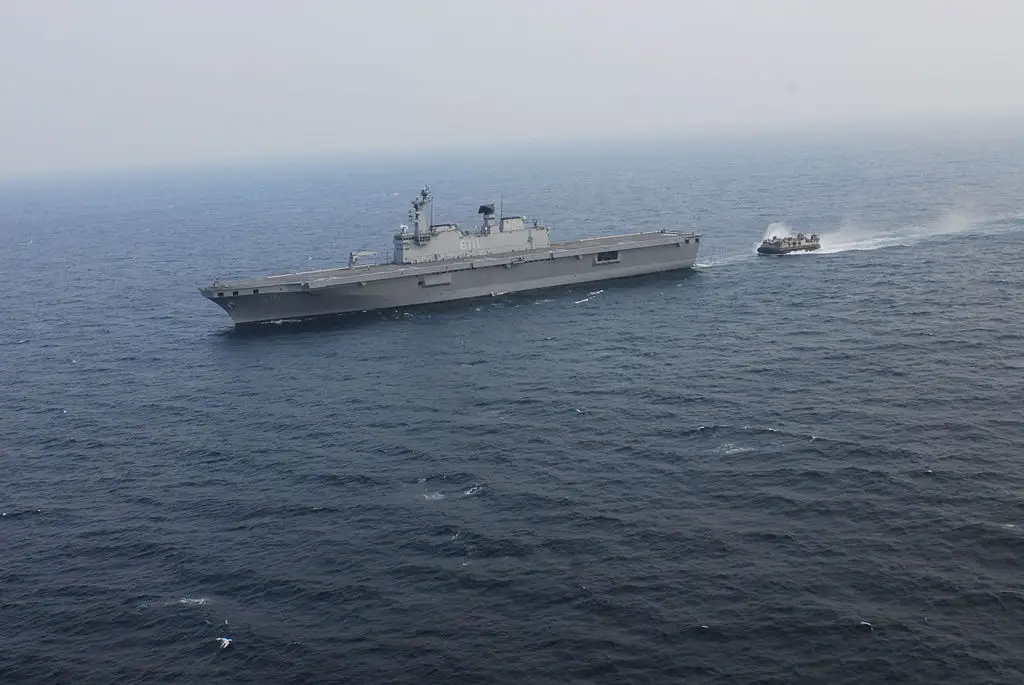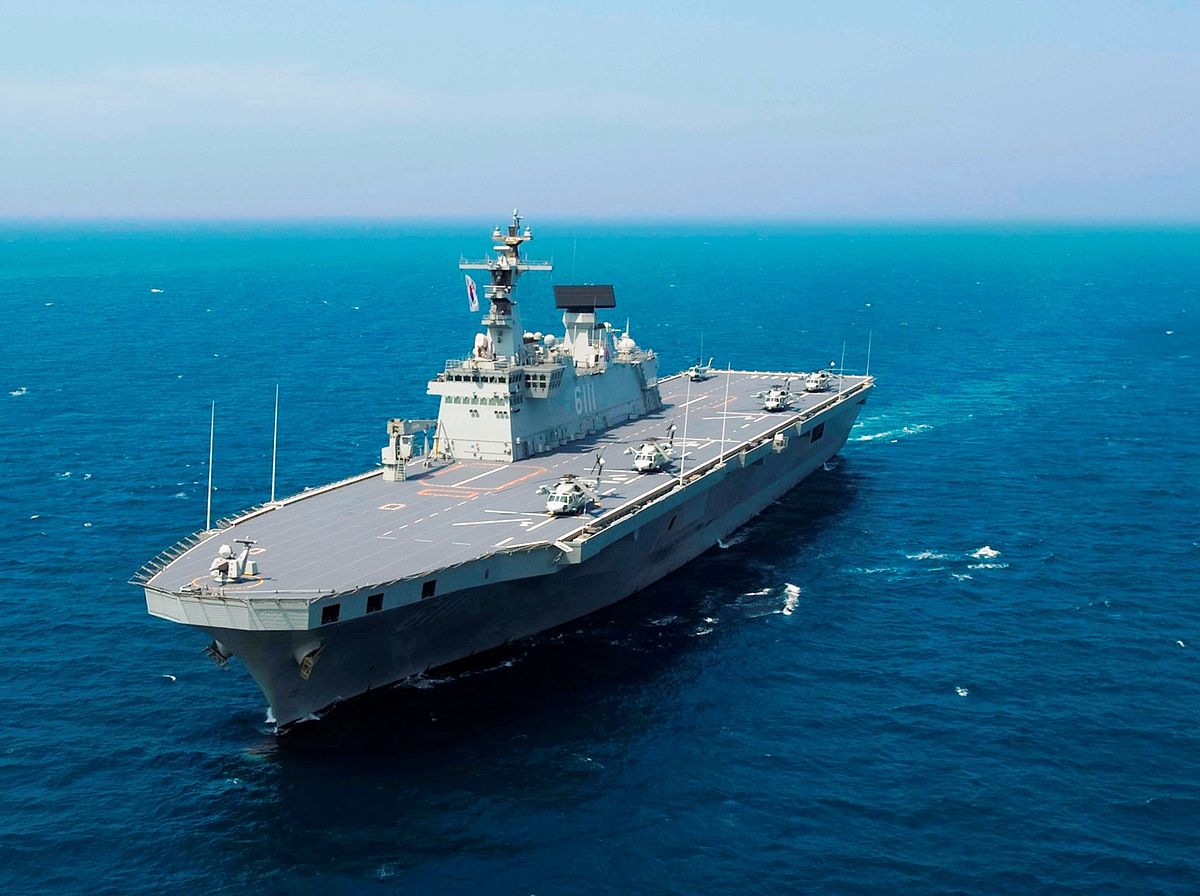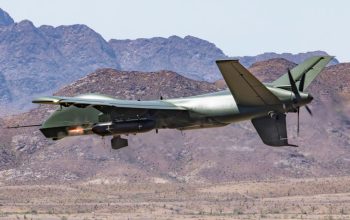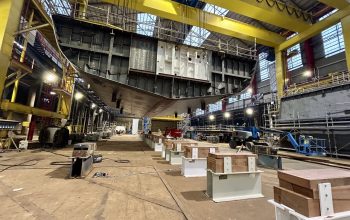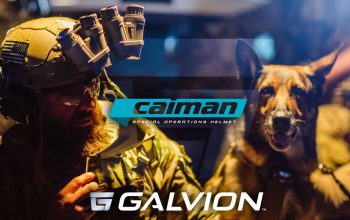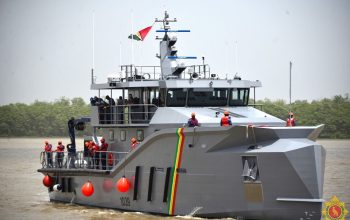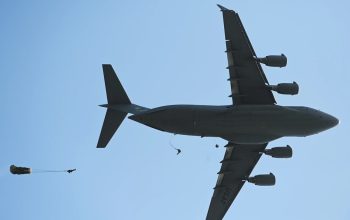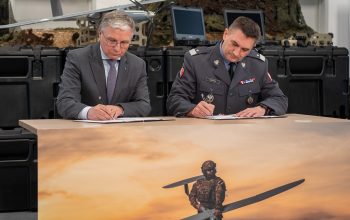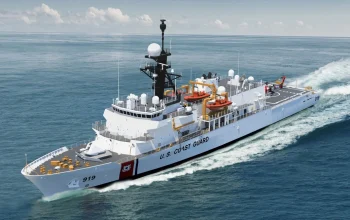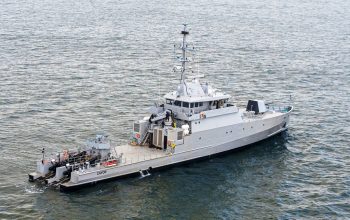The Dokdo-class amphibious assault ship is a class of Landing Platform Helicopter (LPH) amphibious assault ships operated by the Republic of Korea Navy (ROKN). The Landing Platform Helicopter was built by Hanjin Heavy Industries and Construction in Busan, the requirements for the amphibious landing ships were to enhance South Korea’s current amphibious operation capability, both in terms of assault and military operations other than war (MOOTW) type operations. Dokdo is the largest vessel in the South Korean Navy. It has almost similar specifications compared to the Spanish Navy’s aircraft carrier PrÃncipe de Asturias and the Thai Navy’s Chakri Naruebet light aircraft carrier. The ship was named after the Dokdo islets in the East Sea.
The lead ship in its class, ROKS Dokdo (LPH 6111), was launched in July 2005 and commissioned into the ROKN in July 2007. The ROKN also planned to deploy two similar ships intended for strategic mobile units. The second and third units will be named Marado (LPH 6112) and Baengnyeong (LPH 6113). The Landing Platform Helicopter can also be deployed in a range of operations including in support of national overseas policy, peacekeeping operations, disaster recovery, counter-terrorism operations and national prestige enhancement.
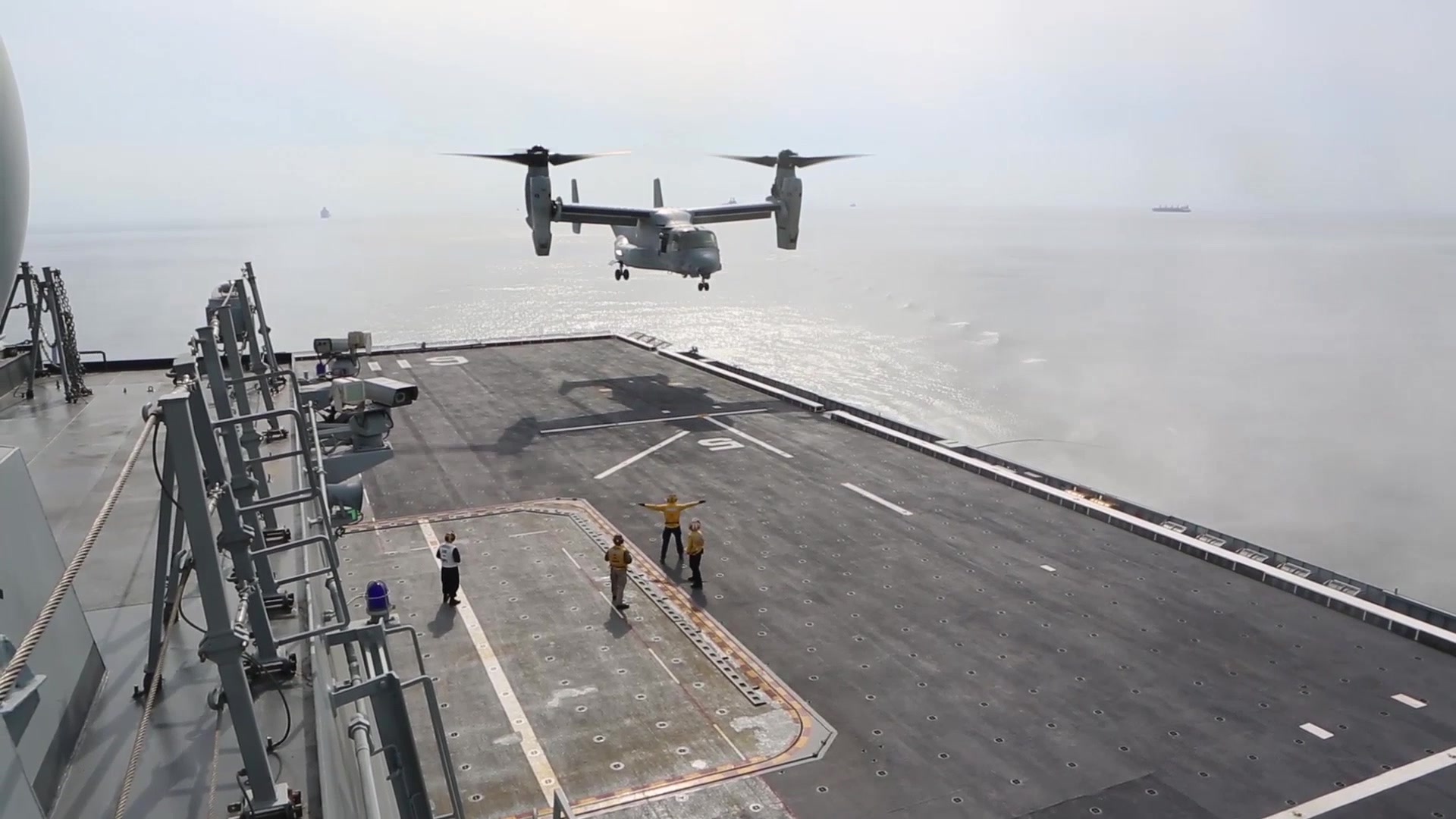
The Landing Platform Helicopter has an overall length of 199m, a width of 31m and a draught of 7m. The standard displacement of the vessel is 14,000t and full load displacement is 18,000t. The LPH can carry over 700 marines, 10 trucks, six tanks, six AAVs, three field artillery pieces, 10 helicopters and two LCACs. Dokdo can complement more than 330 crew members. The hull is divided into four decks to accommodate helicopters, assault amphibious vehicles (AAV), landing craft air cushion (LCAC), tanks and trucks. Accommodation facilities, command posts and crew life support systems are located on deck 2. It has been said to be one of the most advanced vessels in the Asian Pacific.
Korean news agency Yonhap reported in December 2017 that the Korean military was considering operating F-35B aircraft from the Dokdo-class amphibious assault ships. The flight deck is covered with Urethane to withstand the heat created by the aircraft during operations. The ship can operate short-range and VTOL (vertical take-off and landing) aircraft such as the Harrier or F-35B, when equipped with a ski jump board module. Currently, this ship operates mainly UUH-60 helicopter and the AH-1 attack helicopter. The second ship of the class, Marado, was built with some changes compared to Dokdo. The flight deck is adapted to accommodate two V-22 Ospreys, while Dokdo was able to only carry one.
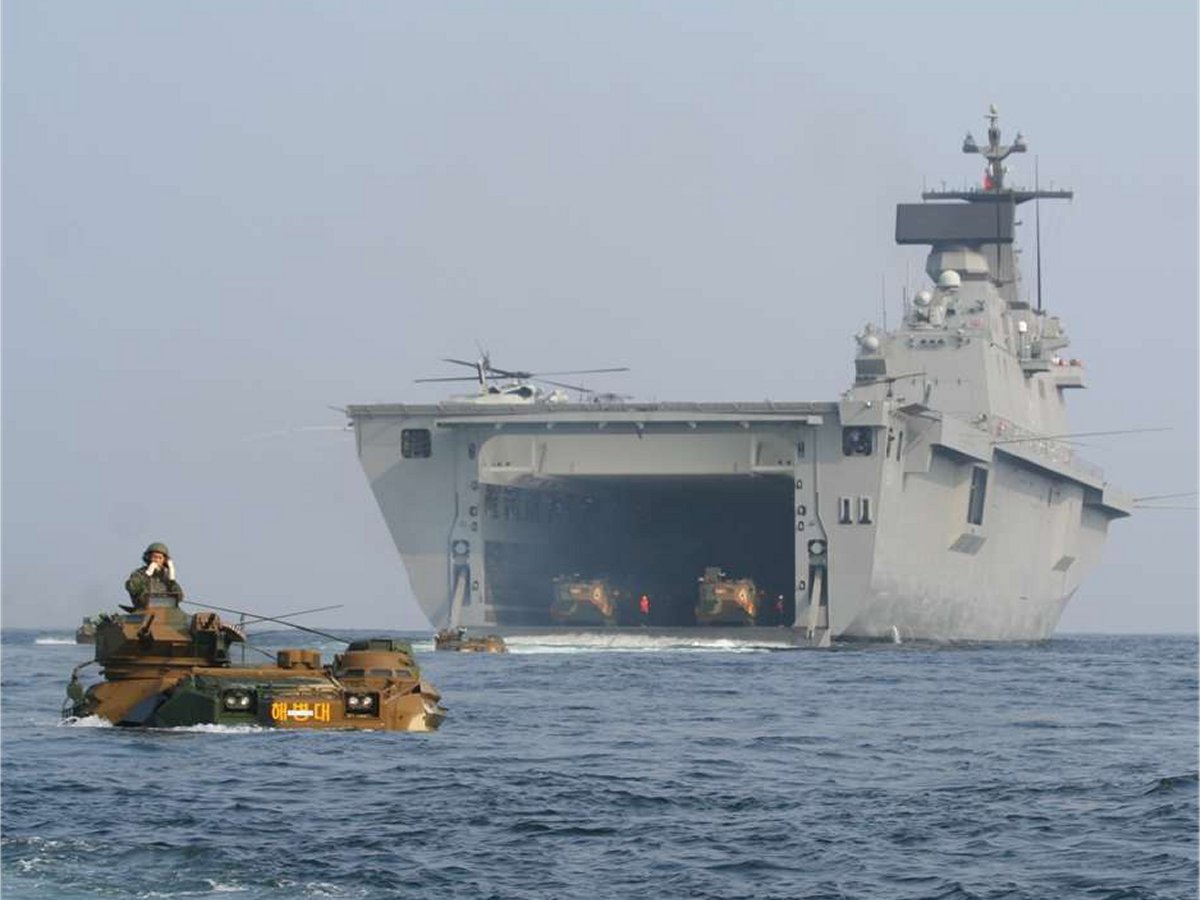
The ship is fitted with two goalkeeper close-in weapon systems (CIWS) supplied by Thales Nederland. The system provides close-point defence against incoming missiles and ballistic shells. The seven barrelled CIWS can fire 4,200 rounds a minute for a maximum range of 2,000m. The Landing Platform Helicopter is also armed with RIM-116 RAM (rolling airframe missile) system. RAM is an infrared homing surface-to-air missile used against anti-ship cruise missiles. The missile can travel at a maximum speed of Mach 2 while carrying a blast fragmentation warhead for a range of 9km. The ship’s long range volume search radar is the Thales SMART-L. The radar can detect and track targets within the range of 400km. The ship is also equipped with MW08 surface search radar and AN/SPS-95K navigation radar.
Dokdo’s propulsion system is based on combined diesel and diesel (CODAD) plant. The propulsion system integrates four S.E.M.T. Pielstick 16 PC2.5 STC diesel engines. These engines were licence built in Korea by Doosan Heavy Industries and Construction. Each engine, rated at 7,650kW, is equipped with sequential turbo charging (STC) system. The CAE Integrated Platform Management System (IPMS) monitors and controls the hull, propulsion, electrical distribution, steering and battle damage control systems. The propulsion system provides a maximum speed of 23kt and cruising range of 10,000nm at 18kt speed.
